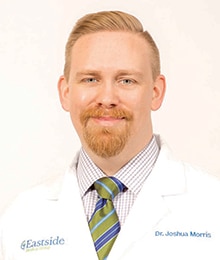
As a treatment modality, ECT has undergone various stages of public perception moving from cutting-edge technology to vilified pseudo-science and is on the cusp of returning to its previous stature as a legitimate, routine, and superior treatment for severe cases of depression, bipolar disorder, and schizophrenia.
In 1938, practitioners were already using other techniques to induce seizures after Dr. Meduna pioneered the technique using camphor oil in 1934. Physicians believed that causing epilepsy was the goal because Dr. Meduna noticed that epileptic patients did not have schizophrenia and vice versa. We now know his observations were incorrect but we have since learned that seizures are the therapeutic part of the treatment, rather than the electricity or medications. We know this because other seizure-inducing techniques have proven similarly helpful. ECT was advantageous because the side effects were mild in comparison to other methods and patients more consistently had a seizure during the treatment. ECT survived because it remains the safest, most consistent, and most tolerable way to induce seizures.
Until 1950, when Thorazine – the first antipsychotic medication – was discovered, there were essentially two treatments available to psychiatric patients, psychoanalysis, and ECT. As ECT grew in popularity, psychoanalytic organizations began an active negative publicity campaign against ECT. After Thorazine was discovered, practitioners began turning to medications because, for the first time, doctors had a medication that actually helped the burdensome signs and symptoms of schizophrenia. This discovery led to new medications and contributed to the downturn of ECT. ECT’s fate was apparently sealed when One Flew Over the Cuckoo’s Nest showed the main protagonist violently treated with ECT involuntarily for a feigned illness in what has become the most infamous and inaccurate portrayal of ECT.
Despite the sometimes negative stigma, ECT remains an effective treatment because of its efficacy for the most severe psychiatric conditions. ECT is undergoing a renaissance, becoming increasingly effective with decreasing side effects. Anesthesia is now used, not to control pain, but to nearly eliminate the risk of fractures. Physicians have decreased side effects by minimizing energy delivered while maximizing efficacy. Various electrode placements have proved to have different effects; some are slower but have decreased side effects. Other neurostimulation techniques (e.g. TMS) have a similar, but less potent effect and are teaching physicians how to fine-tune treatments.
When I came to practice at East-side nearly 4 years ago, I admit that I was skeptical about using ECT to treat dementia patients. However, because I have had the opportunity to treat many patients that other hospitals refuse because of the severity of their illness, I have become convinced that ECT is often very helpful for treating the parts of dementia that make it impossible to live a less-restrictive life. While medications seem helpful, they also lack experimentally validated the efficacy and many carry black-box warnings with significant risks. Comparatively, while ECT is a much more effective and rapid treatment, it is very benign. With an aging population, ECT can be used more in the future.
I have been blessed at Eastside Medical Center with many opportunities to do what I love, which is helping patients recover from debilitating illnesses. Though much work remains, the future of ECT is very promising, and I look forward to practicing alongside my colleagues who are similarly dedicated to the relief of suffering and caring for patients at Eastside Medical Center.
Dr. Morris has been in practice since 2012 when he started at the world-renowned Mt. Sinai Medical Center in NYC directly out of residency. He focuses on treating the most severe psychiatric conditions including Depression, Bipolar Disorder, and Schizophrenia. In 2014, he became the Medical Director of Behavioral Health at Eastside Medical Center as well as the Director of the ECT program.
May is Mental Health
Awareness Month!
Eastside Behavioral Health Associates
2160 Fountain Drive
Snellville, GA, 30078
(770) 982-2345
EastsideBehavioralHealthAssociates.com

